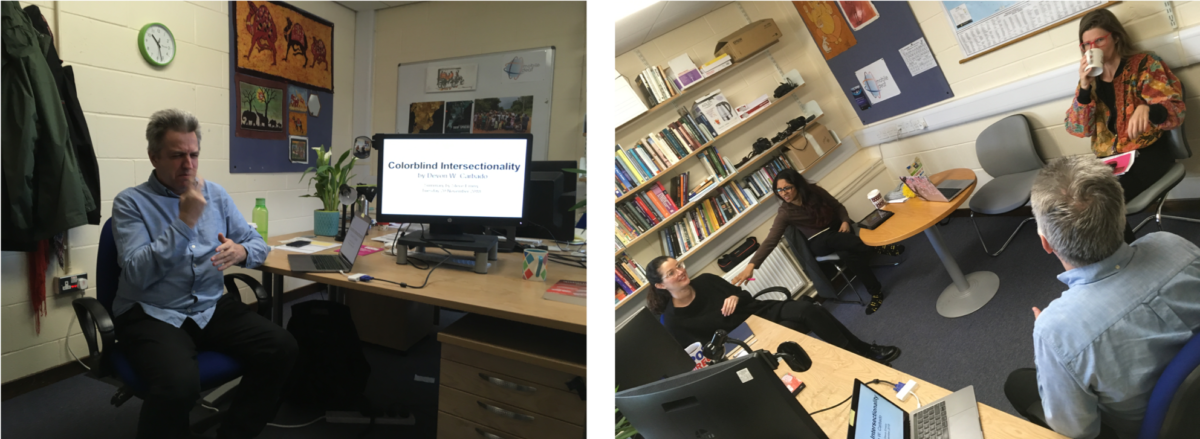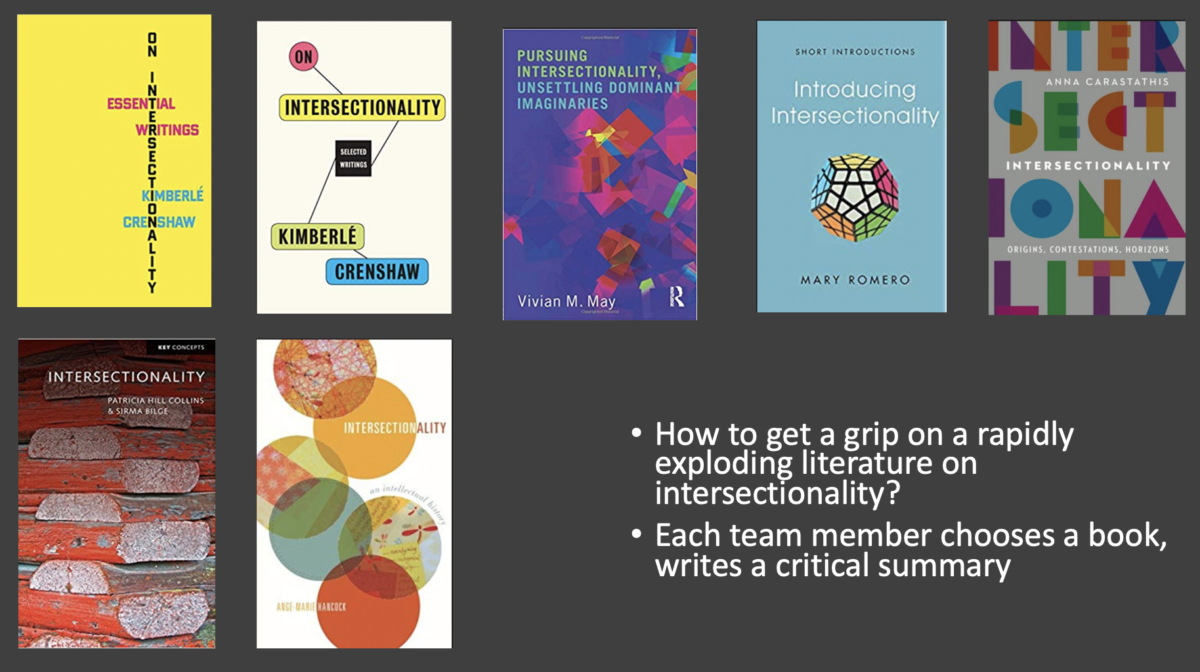By: Annelies Kusters, Erin Moriarty, Sanchayeeta Iyer
Reading group meetings are a great way to critically discuss and digest articles or books. Basically, a group of people reads one or more articles or books in advance of the meeting, and the aim of the reading group is to then talk about the article. The discussion could be based on a set of questions proposed by a leader (or even the author of the work itself), but it can also be more free-flowing. Reading groups help students to digest materials that are essential to their studies but as we discuss in this blog, they are also a great activity for people who work together or who have similar research interests. The MobileDeaf team has organised reading groups since the very beginning of the project, which is now two years ago. Over time we have come to appreciate the multiple benefits that our reading group meetings have offered us. We have come to appreciate the role of reading groups for knowledge production, teambuilding and teamwork, practicing to express ourselves in “academic signing”, and in our case, their function as an academic deaf space.
In the first stage of the project before our field work started, it was important for us to do deep reading on themes of our separate subprojects (eg Erin would read about tourism and Amandine would read about refugees. However, we also read up on themes that were common to all four subprojects, and this was the aim of our reading groups. We read up on the two key concepts underpinning our research, which are translanguaging and intersectionality, as well as on themes such as language ideologies, globalisation, ethnographic filmmaking and visual methods. Doing so, we not only digested the literature together, but actually did a literature review to build a common frame of reference for later meetings about our research findings, and future publications.

Roughly every week, we would read four key articles (general, and deaf/sign language focused). While all of us read all four articles, each of the four articles was also assigned to one of us. This means that each of us would make a powerpoint summary of one article and thus engage more deeply with that particular article. During our meetings, we presented on our individual articles, and then as a group critically discussed the article and how it relates to MobileDeaf.
Discussing the literature also meant we were practicing how to present articles written in English in sign languages. When we give presentations and when we teach we also sign (working with or without interpreters). It is essential for us that we are comfortable and fluent in signing about themes central to our research. By way of the reading groups, we informally practiced to express ourselves clearly, and to paraphrase when people raised their eyebrows due to not understanding.
So, which sign language did we use, then? Two of the five team members are British and usually use British Sign Language (BSL). BSL is also the sign language that surrounds us in our department at Heriot-Watt University, and the main language in which we talk about our work. However, this does not mean our reading group language was strictly BSL. Rather, we were translanguaging.We all know BSL, ASL and IS to various extents and all of these were used, with some VGT, LSFB, French. Gradually, over time when the three non-British people got more used to signing in BSL, the language use shifted towards more BSL (though we continue to translanguage!). For us, it was (and still is) really important to support this translanguaging environment because it meant we could feel more free to express our thoughts through signing (which is already difficult enough when talking about theoretical articles that are written in English!). Sometimes we coined ad hoc signs, eg. for concepts such as “cosmopolitanism” or “translocality” when we discussed articles about this theme. Sometimes these signs stuck, other times they didn’t live on after the meeting.

In 2019 we started with a new experiment in our reading groups. There has been an explosion of full-length handbooks and theoretical monographs on intersectionality (see figure),and since intersectionality is one of our key themes, we wanted to get a grip on that literature. Since it is time-consuming for all of us to read each book, we approached this in a different way than the earlier reading groups where each of us read all the assigned literature. Each of us has chosen one book so far and written a critical summary. Each summary looks very different, going from a journal-style review, to a short summary with a separate set of quotes, to a summary with quotes interwoven. In these summaries, we constanty connect to MobileDeaf themes, thinking about the data that we gathered and our analysis of this data. The critical summary also includes suggestions as to which parts of the book are worth reading in full. We read the summary, quotes and the suggested parts in the book in advance of our meeting. Dissecting and digesting intersectionality books thus became a team effort.
In total we have more than 50 PPTs and three extensive book reviews now. And this brings us to another unexpected benefit. These PPTs have been used in teaching materials, in powerpoint presentations based on our research, and they also basically constitute the first step to the literature review for our MobileDeaf publications, in combination with the countless notes we all made during our reading groups.
A very often uttered phrase in our reading group meetings was “Sorry this is off topic but…”, when someone would talk about a different theme than the article itself. However, actually, in our reading groups, nothing is off topic. We talk about themes such as research positionality, our findings, our life experiences, field work anecdotes (sometimes from many yeas ago), being a deaf academic in a hearing-dominated system, sudden insights that came to us, other texts we have read and recommend, questions that people may ask us when we talk about our research, and so on. Team members more experienced with research would also mentor and advice PhD students who had questions or presumptions about academic life and research.
Thus for us, reading groups provided a safe space to explore not only the literature but also our own signing, our identities as deaf people, as academics and as researchers, and to build and consolidate a solid basis for us as a project team.







